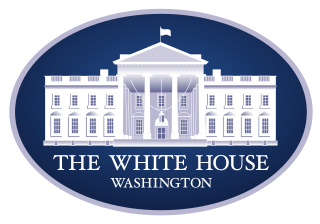Features

Price on Trade: 40% Brazil tariffs, Section 232 copper program, and misplaced carbon claims
Written by Alan Price & Ted Brackemyre
August 10, 2025
Editor’s note: This is an opinion column. The views in this article are those of experienced trade attorneys on issues of relevance to the current steel market. They do not necessarily reflect those of SMU. We welcome you to share your thoughts as well at info@steelmarketupdate.com.
The administration continues to negotiate deals with US trading partners, and the reciprocal tariff program appears poised for further modification. We continue to monitor the situation closely and will likely report back soon with further updates on reciprocal tariffs and their impact on the domestic steel industry. This week, we focus on other important developments that have received less attention in the media.
A 40% tariff on imports from Brazil, certain steelmaking inputs excluded
On July 30, 2025, President Trump announced a 40% tariff on imports from Brazil. The impact of this announcement on the American steel industry may be muted, however, as the new tariffs do not apply to products currently covered by Section 232 tariffs, such as steel and steel derivative products. Further, explicitly excluded from the tariffs are imports of pig iron and DRI. For the domestic steel industry, this exclusion makes sense as there is little to no availability of domestically produced pig iron or pelletized DRI in the United States. And American steel producers rely on importing metallics for some of their production as a result.
S232 copper program focuses on tariffs without export restraints
President Trump also announced on July 30, 2025, a 50% tariff on semi-finished copper and copper-intensive derivative products, following the administration’s Section 232 investigation into copper imports. Those duties went into effect on Aug. 1, 2025. The president separately instructed the Secretary of Commerce to implement a domestic sales requirement under the Defense Production Act, requiring 25% of high-quality copper scrap produced domestically to be sold in the United States. In its Section 232 report, the Commerce Department had also recommended an export licensing requirement for high-quality copper scrap to ensure an adequate domestic supply. However, President Trump did not adopt that recommendation.
It is notable that President Trump decided not to implement an export licensing system. The US copper recycling industry had argued that export restrictions were not warranted given the current strength of the domestic industry. The administration agreed, declining to impose any restrictions on the copper industry’s ability to export. While the president has instructed the Commerce Department to implement a modest domestic sales requirement for high-quality copper scrap, to the extent necessary for national defense needs, such measures are a far cry from the types of export restraints some have argued for in copper and other sectors.
What does this mean for the domestic steel industry? As with copper, the United States has a robust domestic ferrous scrap market and is currently a significant net exporter. In fact, ferrous scrap is a globally traded commodity with more than 100 million metric tons being exported worldwide each year. And a free flow of scrap offsets regional and national imbalances in the supply or grades of scrap available in a particular market. In this regard, domestic steel producers can benefit from the global trade of ferrous scrap. However, scrap is increasingly subject to numerous export restrictions, which hinder trade. The EU stands out in particular, as it has recently revised its Waste Shipment Regulation, which now classifies ferrous scrap as an environmentally harmful waste product, thereby limiting its ability to be exported to non-OECD countries.
More importantly, the EU is also finalizing its Steel and Metals Action Plan, where it is considering imposing significant restrictions on scrap exports in order to decrease the EU internal price of scrap, reducing demand and giving European producers a substantial production cost break. Such restrictions would curtail European scrap exports and generation. This is significant because the EU is the world’s largest exporter of scrap, and these export restrictions would substantially change global scrap trading patterns. Further, the EU’s adoption of these restrictions could increase calls for similar actions in the United States, which would become the last major open supplier of scrap on the world market. We will continue to monitor the development of scrap export restrictions in other markets, and time will tell how these policies continue to evolve.
Recent low-carbon claims highlight flaws of differentiated emissions standards
At the June 25, 2025 staff conference in the US International Trade Commission’s investigation into unfairly traded rebar imports from Algeria, Bulgaria, Egypt, and Vietnam, Egyptian rebar producer Ezz Steel testified that its EAF-DRI production process provides it with a substantially lower carbon footprint (1.3 tons of CO2 per ton of steel) than other rebar producers and that it was exporting because of its carbon advantage. Ezz Steel’s attempt to label itself as a low-carbon producer in this context reminds us of the duplicity of any emissions standard that differentiates by production process or raw material inputs. While Ezz Steel may be a low-carbon producer compared to high-emissions, blast furnace rebar mills in Asia and elsewhere, it is not compared to the US industry, where no rebar is made through that process.
To be clear, Ezz Steel is not a particularly low-emitting rebar producer. Its EAF-DRI pathway may be substantially lower-emitting than BF-BOF production, but it is much higher-emitting than EAF production, which uses mostly recycled ferrous scrap. To illustrate, based on published environmental product declarations, the average carbon intensity of American rebar production is 0.65 tons of CO2 per ton of steel (or half of Ezz Steel’s level). And some US rebar mills have emissions intensities more than three times lower than Ezz Steel. The reason for this difference is that American rebar production is entirely EAF-based, and it relies exclusively on recycled scrap as its metallic raw material input. This difference in production technology and raw material mix is what drives the lower emissions levels.
Yet, when companies like Ezz Steel make claims about their carbon intensities based on production pathways (and not absolute emissions levels), they contribute to the narratives promoted by advocates of differentiated emissions frameworks, such as sliding scales and dual standards. As we have said before, any emissions approach that treats companies and products differently based on how their steel is made (and not on actual emission levels) is bad policy. These approaches disadvantage the United States by mislabeling dirty steel as clean and distorting markets in the process.
Frankly, regardless of one’s preferred approach to or beliefs about industrial decarbonization, it is clear that the American steel industry did not need biased emissions standards (or massive subsidies for that matter) to become the most efficient and lowest-emitting major steel producer. So, the introduction of differentiated steel emissions standards in the United States or globally would do little more than disrupt a market that is already working. To us, these policies appear to be aimed at gaming emissions trading systems and climate programs in other jurisdictions by permitting high-emitting producers to avoid higher tax and regulatory burdens. Allowing this would unnecessarily introduce perverse market incentives based on false distinctions, doing so at the expense of American steelmakers, who are among the lowest emitting in the world. As we believe Ezz Steel’s recent testimony highlights, there is simply no reason to indulge such an approach.

Alan Price
Read more from Alan Price
Ted Brackemyre
Read more from Ted BrackemyreLatest in Features

US mill buys two cargoes of Brazilian pig iron down from Sept prices
SMU spoke with a large channel in Brazil who confirmed his company sold a cargo of 50,000 metric tons (mt) to a US buyer at $383/mt FOB Brazil. That's down $12/mt from the last cargo sold in September.

Final Thoughts
If I could change something, it’d be this: Political news would get more boring. And news about steel prices and steel demand would get a little more exciting.

US and Canada expect positive outcomes from tariff negotiations
Canadian Prime Minister Mark Carney and US President Donald Trump told reporters at the White House on Tuesday that they’ll be formulating a trade deal that works for both nations.

Final Thoughts: Survey says edition
SMU’s latest survey results indicate that steel market participants think sheet prices are at or near a bottom. But most also think there is limited upside once they inflect higher.

SMU Scrap Survey: Current and Future Sentiment tick down
SMU’s Current Sentiment Index for scrap decreased this month, a move mirrored by our Future Sentiment Index, according to the latest data from our ferrous scrap survey.
